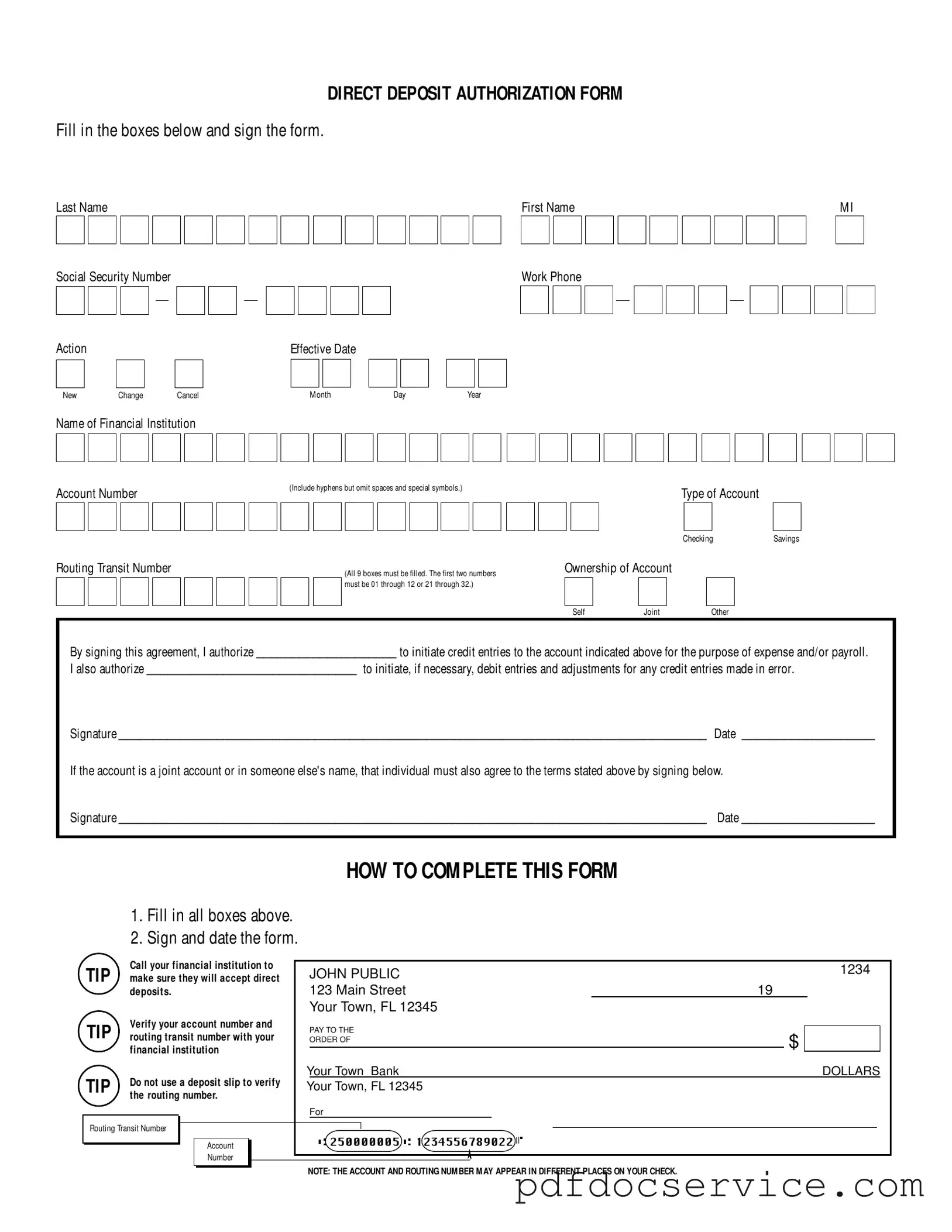When it comes to managing your finances, the Generic Direct Deposit form is an essential tool that simplifies the process of receiving payments directly into your bank account. This straightforward document allows individuals to authorize their employer or other entities to deposit funds electronically, eliminating the need for paper checks. Completing the form involves filling out personal details such as your name, Social Security number, and contact information, along with specifics about your bank account, including the account number and routing transit number. It's crucial to ensure that all required fields are accurately completed to avoid any delays in processing. Additionally, the form includes options for new deposits, changes to existing arrangements, or cancellations, making it versatile for various financial situations. By signing the form, you grant permission for the initiation of credit entries to your account, and if necessary, for any adjustments related to errors. If the account is jointly held, a signature from the other account holder is also required. To ensure a smooth experience, it's advisable to verify your account and routing numbers with your financial institution before submission.
